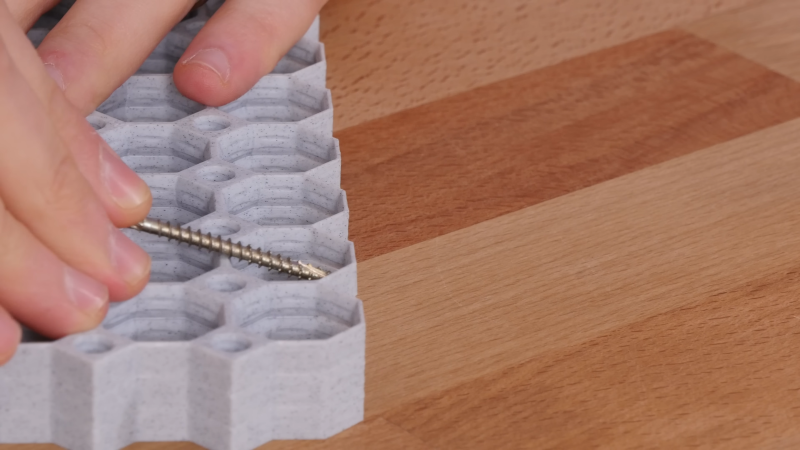There is a big difference between building one of something and building, say, 100 of the same item. It isn’t surprising, then, that 3D printing in bulk differs from printing one object at a time. Of course, filling up your build plate is not a new idea. But [Keep Making] wants to encourage you to think in three dimensions and fill up your build volume in the Z axis, as well.
When you fill your X and Y axes, it is easy to see how the parts separate. But with stack printing, you must separate the parts from different layers. Each part has a single-layer gap, and the top surfaces are ironed for a better finish. Sometimes the prints may stick, and the video shows how to use a screw to pop off recalcitrant prints. The technique produces one side that isn’t as nice a finish as the other side, but it isn’t bad, and for many applications, you don’t care, anyway.
Before you get too excited about your own designs, you might try a simple test file and get your print settings dialed in. Obviously, if you need just two or three copies of something small, it is easier to step and repeat them across the build surface. But if you need to maximize your throughput or make multiple copies of large objects, this might be the technique for you.
Looks like an interesting technique that doesn’t require you to do anything strange like, say, waterproof your printer. No strings attached.

















The face screen STLs during the pandemic that everyone printed were geared this way, in stacks of 3/5/10 as far as I remember. Required a little work to separate them but was clean enough once done, slightly rough surface between them like it had supports removed but was fine. I preferred printing in singles because it was easier to clean with cold water steriliser and felt smoother to the touch.
2 print heads or more will let you print multiples, just need a Y cable (pun intended) for the extruder and hot end.
The main problemI have is most designs (including ones that might benefit from this) have large flat areas. These would be better served with flat stock and a way to cut it. Be it a stamp, CNC router, laser, watwr jet, plasma cutter. I find that my brain works in flat stock as well. I see a design that will take me 20hrs to print, but if I replace 10-20% of the volume with Aluminum, Balsa, ABS, Acrylic, Wire, Zip-Ties, All-Thread. I am all of a sudden using half the material and 3/4 or less time.
This seems like a good idea but isn’t really in practice, you are greatly increasing the points of failure, all it takes is one to not stick right and the rest is ruined.
Watching videos from someone who runs a 3D printing business, they do not batch parts, they have a single part per build plate in order to minimize losses if a part fails and they have a system for removing parts from the build plate.